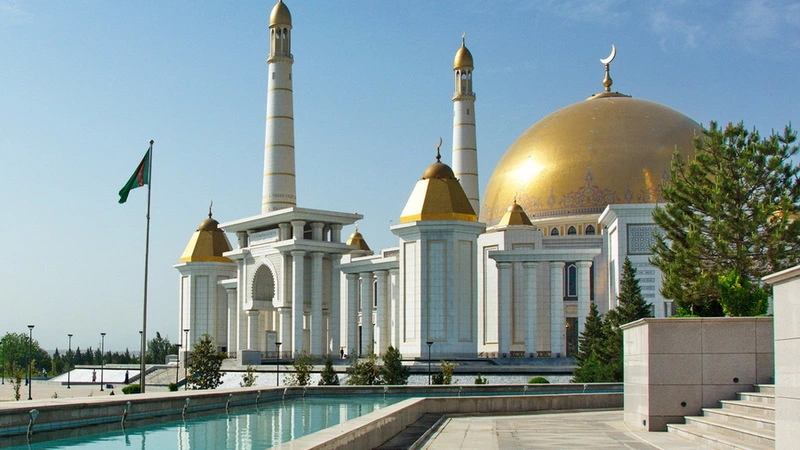Turkmenistan is a land with ancient roots, situated along the Great Silk Road. Its lands hold a rich heritage, echoes of which can be seen in every architectural detail. Among this heritage, the mosques stand out as majestic symbols of spirituality and art, uniting people, inspiring them, and preserving the cultural identity of the nation through the centuries.
The History of Islam in Turkmenistan: From Conquests to Unity
Islam arrived in Turkmenistan in the 7th century when Arab conquerors brought the new faith. However, the Islamisation of the region was a gradual process. Local customs and traditions merged with Islamic norms, creating a unique symbiosis. Over time, the religion became a key element of Turkmen cultural identity, and mosques evolved into not only places of worship but also centres of social life.
Architectural Features of Turkmen Mosques
The mosques of Turkmenistan are masterpieces of art where Islamic traditions harmoniously blend with local stylistic features. Their uniqueness can be observed in the following elements:
- Domes and Minarets: The domes of Turkmen mosques are often painted in vibrant blue or turquoise, symbolising the vast sky. The minarets emphasise grandeur and the upward striving of faith.
- Tilework: Colourful ceramic tiles adorn the walls and domes, creating intricate patterns that often include stylised Quranic inscriptions.
- Wood Carving: Decorative carvings embellish doors, mihrabs (prayer niches indicating the direction of Mecca), and minbars (pulpits for sermons), showcasing exquisite craftsmanship.
- Mosaics: Interiors and exteriors are often decorated with vivid mosaics, adding colour and a festive atmosphere to the structures.
Regional Heritage of Turkmenistan's Mosques
Each region of the country carefully preserves the history and unique features of its mosques:
Merv (Mary Region): An Ancient City on the Silk Road
Merv, one of Turkmenistan's jewels, is a UNESCO World Heritage Site. This ancient city was a vital trade and cultural centre. Here you can find:
- The Mosque of Yusuf Hamadani, a site of pilgrimage and spiritual inspiration.
- The ruins of the Beni Mahan Mosque, one of the oldest in the region.
Annau (Ahal Region): A Medieval Masterpiece
The Seyit Jemal ad-Din Mosque, built in the 15th century, is a unique architectural creation. Located on a hill, it combines elements of a mosque and a mausoleum, forming a sacred space.
Ashgabat: The Capital of Grandeur
Ashgabat is home to one of Central Asia's largest mosques — the Turkmenbashi Ruhy Mosque. This modern structure astonishes visitors with its scale, beauty, and symbolism.
Balkanabat (Balkan Region): Unique Coastal Architecture
The mosques of this region reflect the influence of the coastal climate and local architectural traditions.
Spiritual and Cultural Legacy
Turkmen mosques are more than just buildings. They narrate stories of faith, cultural exchanges, and artisanal mastery. Every detail of these structures — from mosaic panels to wood carvings — conveys the spirit of their era and the skill of their creators. Turkmenistan awaits you. Its mosques are ready to open their doors and share their ancient tales.

